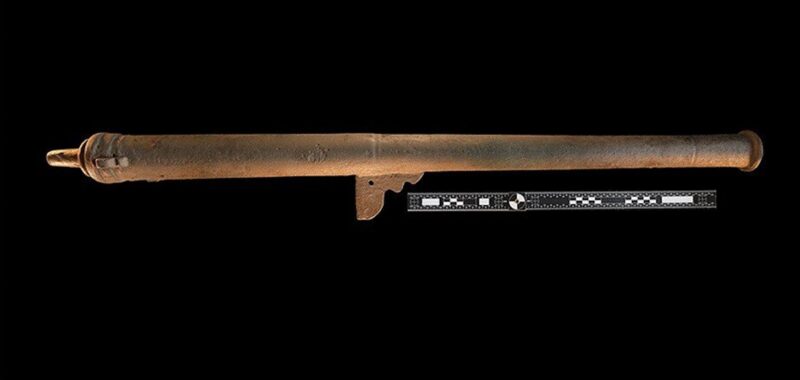A bronze cannon recently recovered by researchers in Arizona appears to be the oldest known firearm ever found in the continental United States. According to experts, analysis indicates the 40 lbs weapon was likely owned by one of history’s most famous and notorious conquistadors, although he may never have fired it in battle.
In 1539, Vázquez de Coronado mortgaged his wife’s belongings and took out massive loans to finance an expedition to North America. The Spanish conquistador and his 350 soldiers intended to locate the legendary (and nonexistent) Seven Cities of Gold somewhere north of Mexico. Instead of untold riches, Coronado and his men spent the next three years plundering, enslaving, and murdering their way across the region. Coronado ended his expedition in Mexico City, bankrupt and facing war crime charges, but his influence on North America would linger for generations.
The conquistador and his remaining men didn’t pack all their belongings before returning to the then-Spanish settlement, however. According to the authors of a study published on November 21st in the International Journal of Historical Archeology, one site in particular has yielded numerous artifacts linked to the explorers. In the ruins of a stone and adobe structure located in Arizona’s Santa Cruz Valley, researchers discovered olive jar and glass shards, European pottery, and weapon components—including a 42-inch-long bronze cannon.

Also known as a wall gun, the early firearm required two operators, and was generally used as a defensive weapon mounted on a wooden tripod on fortification walls. In Coronado’s case, however, such a cannon would have been utilized for offensive purposes, usually to blast through the thinner walls of structures in Indigenous settlements.
Radiocarbon dating and optically stimulated luminescence methods allowed archeologists to date the cannon to Coronado’s time, while the other artifacts matched accounts of his expedition’s materials and belongings. Unlike more ornate Spanish cannons, however, the wall gun’s plain casting indicates it may have actually been constructed in Mexico or the Caribbean—and may have even been purchased from Ponce de León’s preceding expedition.
[Related: Focaccia likely originated in Mesopotamia, not in Rome.]
According to researchers, historical records show that the settlement where they recovered the wall gun was at one point attacked by Sobaipuri O’odham locals, forcing Spanish explorers to retreat. Additional discoveries of lead shot and arrowheads at the archeological site collaborate the accounts, although it is unknown why the cannon was apparently never used.


